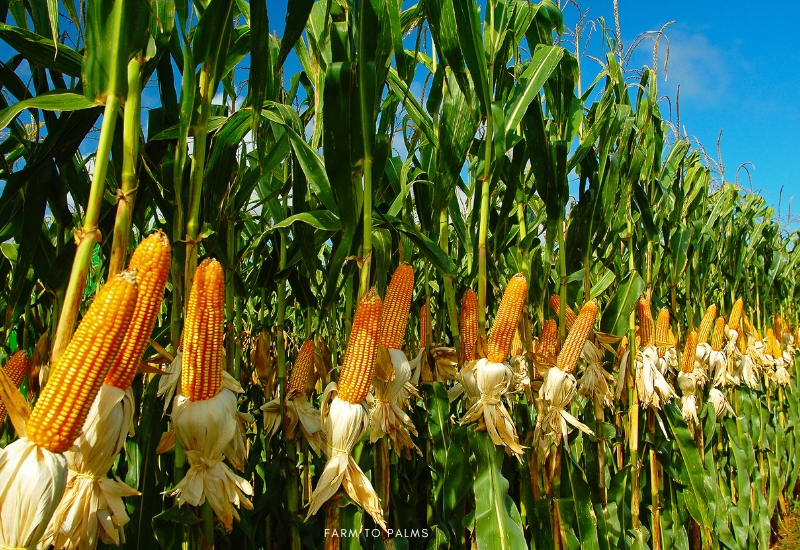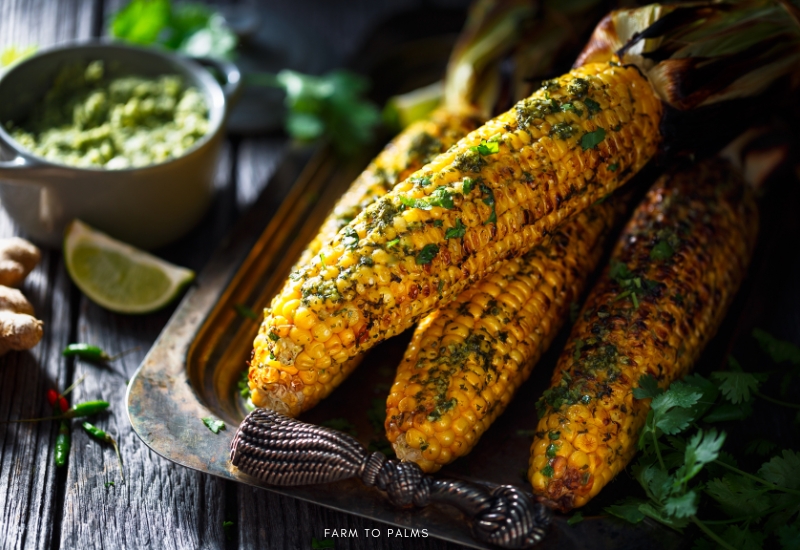Corn is commonly consumed in the human diet and is found in various culinary preparations such as side dishes, soups, and casseroles.
Popped corn kernels are also enjoyed as a popular snack during leisure activities like watching movies. However, there needs to be more clarity regarding the classification of corn as a vegetable.
While many people associate corn with vegetables, it is essential to note that corn is considered a grain rather than a vegetable.
In botanical terms, vegetables are typically derived from the leaves, stems, and other plant parts, whereas corn is classified as a fruit due to its origin from the reproductive structures of the plant.
This distinction highlights the intricacies involved in categorizing various plant-based foods.
Is corn a fruit, vegetable, or grain?

This question may seem childish, but surely, many adults would not know the answer.
Under scientific explanation, the answer to the question “Is corn a fruit, vegetable, or grain?” is more complex than we might think.
First, let’s explore some basic knowledge of biology about corn.
Corn is the name of a cereal plant that originated from the Americas. Nowadays, corn is cultivated all over the world. A corn plant has a stalk with multiple nodes, similar to bamboo or sugarcane. From these nodes, corn leaves grow.
Inside the leaf portion is the corn ear. They are clusters of female flowers enclosed in many layers of husk leaves. On each flower is a long silk that extends outside the husk leaves. This silk is known as corn silk. Corn kernels (or seeds) form when these silks capture pollen from the tassel (male flowers) on top of the corn plant.

There can be up to 400-600 female flowers on a single corn ear, but only the silks that successfully capture pollen will form kernels. These kernels stick together around a core and are arranged in rows to create a corn ear.
Determining whether a type of food is a fruit, vegetable, or grain depends on which part we consume. If we eat the part that originates from the female reproductive organ, it is called a fruit. If we eat other parts of the plant, it is considered a vegetable.
“The kernels of corn originate from the female flowers of the plant, so biologically speaking, they are a type of fruit,” explained Marvin Pritts, a professor of agriculture at Cornell University.

Each corn kernel consists of a united silk and husk layer; the endosperm (or flesh), which is primarily starch; the germ (embryo), which contains vitamins and enzymes; and the cob, which includes fiber and helps transport nutrients to the developing kernels.
The structure resembles other types of seeds (such as wheat, peanuts, and beans), so people often refer to them as “corn kernels” rather than “corn fruit.” From a biological perspective, corn is also classified as a cereal grain like oats.
So, is corn a vegetable? Scientifically speaking, no. However, in terms of culinary usage, it can be considered one.
Fruits are typically eaten raw, but no one eats a natural corn ear like they would an apple or pear. Vegetables often require cooking, and corn is no exception.

Some may argue that “vegetables” refer to leaves, stems, or plant parts. But according to scientists, “vegetable” is a vague concept. Carrots and potatoes are not leaves but are considered “root vegetables.” Bell peppers are fruits but are often treated as vegetables. Bottle gourd is a fruit but consumed as a vegetable.
Therefore, whether corn is classified as a fruit, vegetable, or grain is a difficult question to answer. What do you think? Is corn a fruit, vegetable, or grain?
What’s the history of corn?

Corn, known as maize in many parts of the world, traces its origins to the Americas. It holds the distinction of being the most widely cultivated crop globally. Notably, three prominent varieties of corn exist:
- Sweet corn: This type is commonly encountered in grocery stores and is favored for its palatable taste.
- Field corn (or dent corn): Primarily utilized as animal feed, this variety is vital to livestock nutrition. It also finds applications in certain industrial products.
- Indian corn (or flint corn): Distinguished by its diverse hues, this corn variant is commonly employed as a decorative element, particularly during Thanksgiving celebrations. Moreover, a specific Indian corn is cultivated explicitly for popcorn production.
Historically, it is believed that corn originated from a particular species of Mexican grass. It is worth noting, however, that wild corn does not naturally occur in any known habitat.
What are the health benefits of eating corn?

There are numerous health advantages associated with the consumption of corn. However, the specific benefits vary slightly depending on the particolored popcorn or sweet corn.
Corn is classified as a whole grain, encompassing the entire grain kernel. Whole grains are widely recognized as the most nutritionally superior type of grain, containing essential vitamins, minerals, and dietary fiber. Corn, in particular, surpasses other grains in vitamin A content and is an excellent source of antioxidants.
Furthermore, corn is acknowledged as a starchy vegetable, distinguished by its comparatively lower levels of sugar, fat, and sodium when compared to certain other starchy vegetables.
Whether one consumes corn on the cob or plain popcorn, both forms offer a plethora of essential nutrients, including protein, fiber, copper, zinc, vitamin B-6, potassium, and niacin.

Additionally, corn boasts several other health benefits, such as enhancing eye health due to its lutein and zeaxanthin content, providing a range of beneficial antioxidants, and aiding in the prevention of diverticular disease and reduction of LDL cholesterol levels owing to its high fiber content.
How to eat corn?

Corn is a versatile ingredient that can be prepared in various ways. While familiar options like popcorn and corn on the cob are popular, countless recipes are available to incorporate corn into your diet. Here are a few suggestions to explore new culinary possibilities with corn:
- Whole grain corn muffins: These make a nutritious substitute for regular white rolls and can complement any meal. (Recipe provided.)
- Corn and tomato pasta salad: This dish offers a healthy option that can be served as a standalone meal or as a side dish without shredded chicken. (Recipe provided.)
- Corn and cheese chowder: Perfect for chilly fall or winter days, this warm and hearty soup requires only 15 minutes of preparation time. It yields a substantial batch suitable for larger families or leftovers. (Recipe provided.)
- Mexican grilled corn with cilantro: A unique twist on traditional corn on the cob, this recipe will surely be a crowd-pleaser at any outdoor barbeque gathering. (Recipe provided.)
- Baked cream corn: Impress your guests at potluck events or dinner parties with this easily prepared casserole dish.
- Classic succotash: While it may require a longer preparation time, the outcome of this dish—a healthy and delicious medley—is well worth the effort invested. (Recipe provided.)
- Quick-pickled corn: If you desire a make-ahead option, this quick-pickled corn is ideal. While it can be prepared swiftly, it requires refrigerators for at least a day to enjoy as a refreshing accompaniment to any meal, particularly on warm days.
Enjoy corn’s nutritional benefits and culinary diversity by purchasing products from Farm to Palms supermarket. With high-quality whole-grain corn, you can create delicious and nutritious meals.
Make whole-grain corn muffins, corn, tomato pasta salad, or corn and cheese chowder. Grill some Mexican-style corn with cilantro for a unique twist at your next outdoor barbecue.
Impress your guests with baked cream corn at potluck events or dinner parties. And for a refreshing accompaniment, try quick-pickled corn, perfect for warm days. Explore these excellent corn options and more at Farm to Palms.

